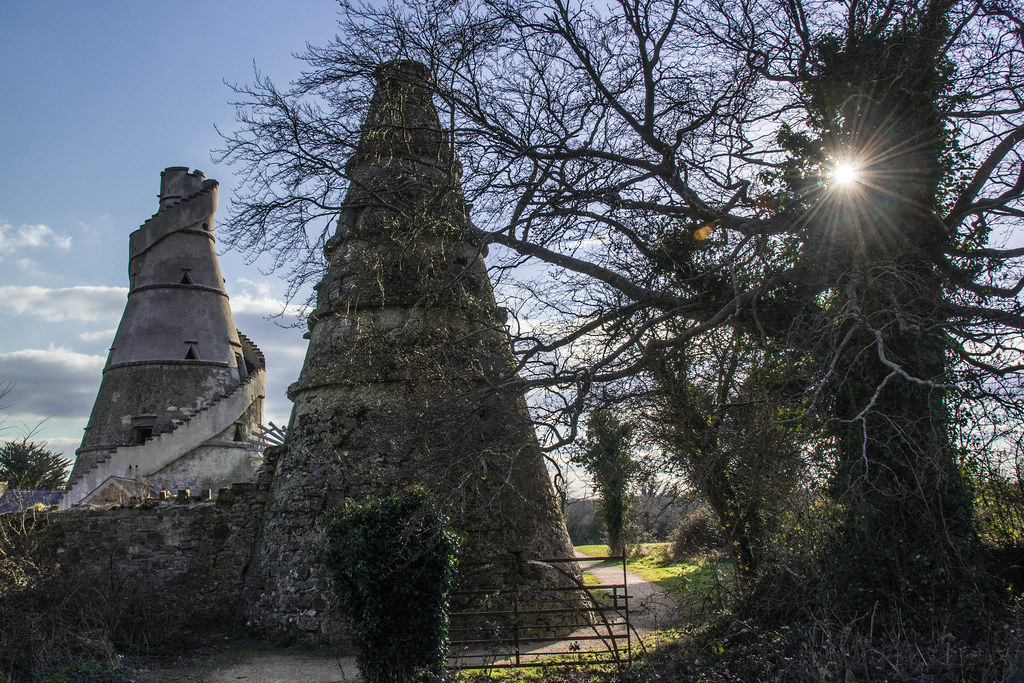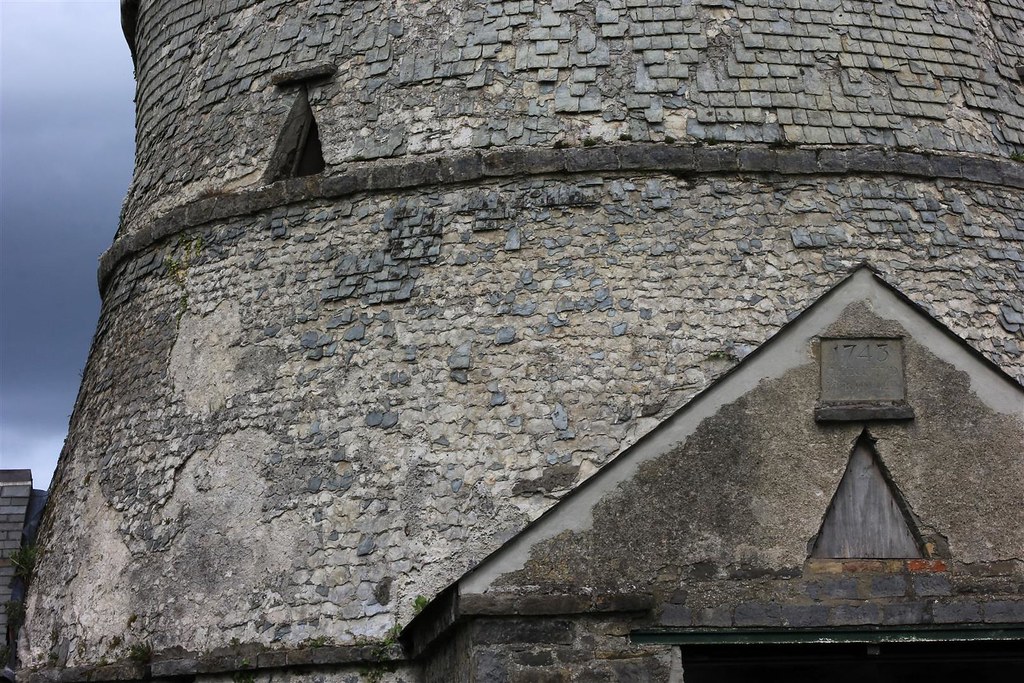11 June 2017
The Wonderful Barn: Ireland's Spiralling Storehouse
The Irish are often the first to admit they have an inclination to exaggerate. So, when a corkscrew-shaped barn built was built on an estate in County Kildare near the town of Leixlip in 1743 the locals quickly called this extraordinary structure The Wonderful Barn – note the use of the definite article. Yet in this instance their hyperbole was not unwarranted. This is indeed the most remarkable of barns.
It had, during its lifetime (it is now unused) several functions – the first and foremost as a barn in which to store local produce. It is taller than your average barn, however, and stands seven storeys high. Some of the floors were used as living quarters for servants. There is a tale (perhaps a tall one) that these quarters and indeed the features of fortification of the barn were not simply a design feature.
Ireland had been in the grip of a famine which had struck in the earlier part of the decade. The widow of Speaker Conolly, the owner of the farmhouse, decided upon a huge barn project to give locals relief work after their crops had failed.
Image Credit Flickr User Bart Busschots
Image Credit Flickr User Bart Busschots
Who can say whether the irony of building a barn in a time of famine was remarked upon yet no doubt the widow Conolly made the decision with only good intentions. After all, the famine of 1740-41 had killed almost 40 percent of the Irish population. The barn was no doubt built in the hope it would help avoid a similar calamity in the future.
However, such a large storage space would, in those desperate days, become a potential target for local clans. It was perceived that they might risk the wrath of the law to steal whatever might be stored in the barn to feed their hungry families. Hence the barn was built in a way that it could be very easily defended.
Image Credit Flickr User Bart Busschots
Behind the main structure of the barn there are two smaller structures, built seemingly in imitation of The Wonderful Barn. In fact these were never used to store grain but were working dovecotes until the farm was abandoned. Doves were considered something of a delicacy in eighteenth century Europe and were consumed in great numbers when other game was out of season.
Image Credit Flickr User Ilja
The windows were made triangular in shape in order to facilitate guns should the need arise. Although there is a precipitous spiral staircase of 94 steps winding around the barn leading to the top, over seventy feet off the ground, there was plenty of room for one on the inside as well. For the time in which it was built this was something of a technical and engineering achievement.
Once the grain was inside the barn it would be pulled up through a circular hole which was situated in the center of each floor. First it would be spread out on the floor and once it was dry it would then be packed in to sacks. It could then be stored through the winter without the risk of it rotting.
Image Credit Wikimedia
Image Credit Flickr User Bart Busschots
It is unfortunate that vandals have burned out the inside of this amazing barn so it is not structurally safe enough to enter - not to mention the farm being abandoned and a shadow of what it was in its Georgian and Victorian heyday. However, it seems that the Kildare County Council plan to restore the interior so hopefully at some point in the future the interior of this incredible structure will be just as wonderful as it is outside.
First Image Credit Flickr User Bart Busschots
It had, during its lifetime (it is now unused) several functions – the first and foremost as a barn in which to store local produce. It is taller than your average barn, however, and stands seven storeys high. Some of the floors were used as living quarters for servants. There is a tale (perhaps a tall one) that these quarters and indeed the features of fortification of the barn were not simply a design feature.
Ireland had been in the grip of a famine which had struck in the earlier part of the decade. The widow of Speaker Conolly, the owner of the farmhouse, decided upon a huge barn project to give locals relief work after their crops had failed.
Image Credit Flickr User Bart Busschots
Image Credit Flickr User Bart Busschots
Who can say whether the irony of building a barn in a time of famine was remarked upon yet no doubt the widow Conolly made the decision with only good intentions. After all, the famine of 1740-41 had killed almost 40 percent of the Irish population. The barn was no doubt built in the hope it would help avoid a similar calamity in the future.
However, such a large storage space would, in those desperate days, become a potential target for local clans. It was perceived that they might risk the wrath of the law to steal whatever might be stored in the barn to feed their hungry families. Hence the barn was built in a way that it could be very easily defended.
Image Credit Flickr User Bart Busschots
Behind the main structure of the barn there are two smaller structures, built seemingly in imitation of The Wonderful Barn. In fact these were never used to store grain but were working dovecotes until the farm was abandoned. Doves were considered something of a delicacy in eighteenth century Europe and were consumed in great numbers when other game was out of season.
Image Credit Flickr User Ilja
The windows were made triangular in shape in order to facilitate guns should the need arise. Although there is a precipitous spiral staircase of 94 steps winding around the barn leading to the top, over seventy feet off the ground, there was plenty of room for one on the inside as well. For the time in which it was built this was something of a technical and engineering achievement.
Once the grain was inside the barn it would be pulled up through a circular hole which was situated in the center of each floor. First it would be spread out on the floor and once it was dry it would then be packed in to sacks. It could then be stored through the winter without the risk of it rotting.
Image Credit Wikimedia
Image Credit Flickr User Bart Busschots
It is unfortunate that vandals have burned out the inside of this amazing barn so it is not structurally safe enough to enter - not to mention the farm being abandoned and a shadow of what it was in its Georgian and Victorian heyday. However, it seems that the Kildare County Council plan to restore the interior so hopefully at some point in the future the interior of this incredible structure will be just as wonderful as it is outside.
First Image Credit Flickr User Bart Busschots
























